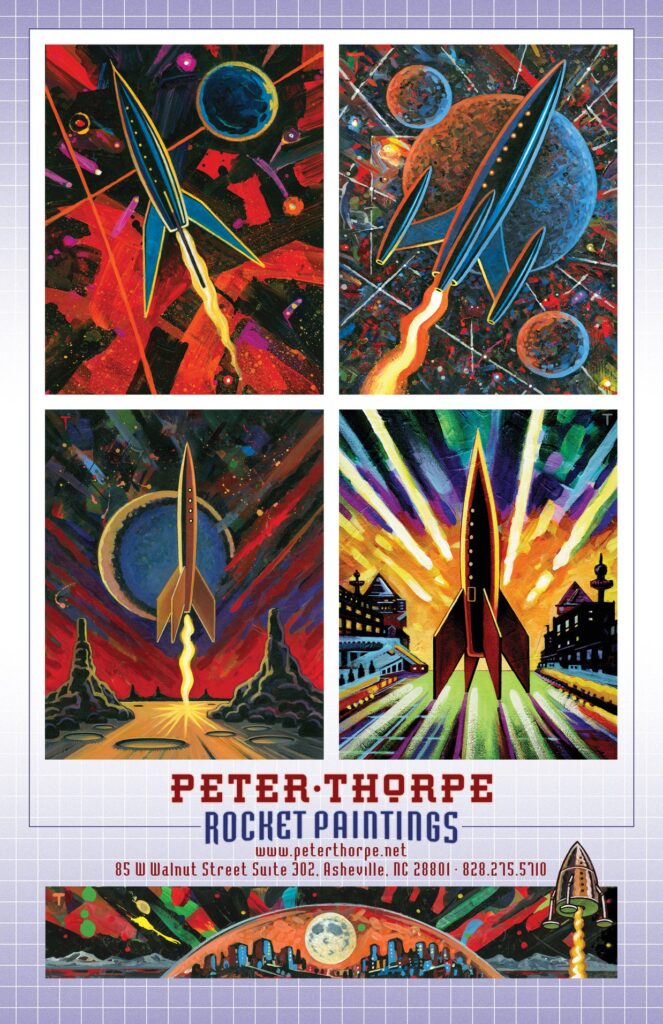Heads up: This post may contain affiliate links. Learn More.
The last project of the year I did with my Year 5 class was this mixed media space art project inspired by artist Peter Thorpe. We took a good look at his signature motifs and how well he combines colour and texture in his work.
Peter Thorpe has been an illustrator and designer since 1976. Although he specialised in children’s book covers, his Rocket Painting series that he developed while working as Creative Director of the Space Frontier Foundation (1988 – 2008), continues to inspire young artists and space lovers to this day.

After we finished our space art project, I let the students critique each other with my art peer assessment sheet which gives them a chance to walk around and take a good critical look at each others artwork.

We learned about shading with oil pastels and most importantly how to accurately depict the light source on your drawings.
What you’ll Need

What to do
1. Draw a Rocket on white card stock
On white card stock we drew rockets or spaceships in pencil and then outlined it in black sharpie. I did my own demo on how to draw an easy rocket, but this quick video tutorial could help too.
2. Colour + cut out the Rocket
I instructed the students to get 3 colours of oil pastels. Arrange the pastels in order from lightest shade, middle, and darkest shade.
I found this was the easiest way to demonstrate how to show them how to make something look 3 dimensional.
They were to decided where the light source was coming from (left, right, top or bottom), then they used their lightest shade to colour a strip closest to the light source, followed that with the medium shade, and used the darkest shade on the parts that were furthest away from the light source.
Blend the shades of oil pastel to create a lovely 3d looking rocket.
Cut the rocket out once its all coloured in.

3. Paint The Background
Taking inspiration from the various techniques used by Peter Thorpe, they were to paint the background environment of their spaceship on black paper using acrylic paint. The students got really creative with this, some were abstract and some were literal, they all looked cool in the end.
4. Paste the Space Ship to the Background
Once the background is dry, stick the Rocket on top using a glue stick.
You’ll end up with a really cool space art project that incorporates, illustration, oil pastel, paint, and collage!

Have you tried this Peter Thorpe space art project? How did it turn out?
